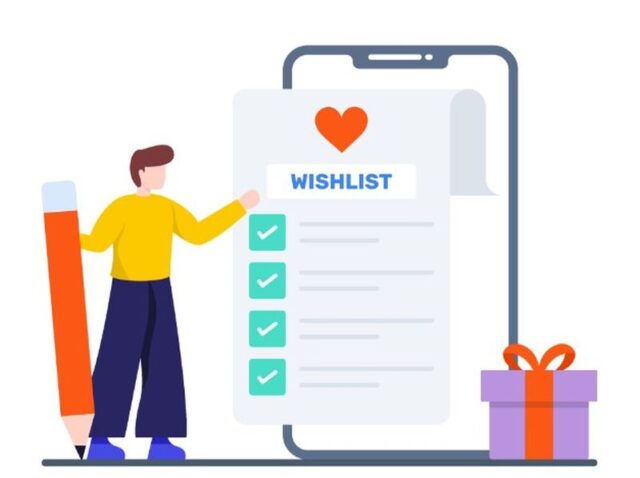
Shopping in a digital era is much different than it ever was. It’s more convenient; you have more options, special offers, and discounts than you can count.
You can also use these digital means to save money in many ways. Still, it’s not ideal and carries a certain number of risks.
For instance, impulse purchases are more dangerous than ever. A while ago, if you had an idea to buy something you might not need, you had the time to cool off. For instance, if you had this idea in the middle of the night, you had to wait for the stores to open in the morning, or you at least had the time to think while driving to the store. Today, you can spend thousands of dollars without leaving your chair.
So, how do you overcome this and many other challenges that are new/endemic to the digital age? Here are the top ten tips to help you out.
Set a budget

While making your shopping list, you should simultaneously monitor your budget. Your purchases are a major expense. It’s easy to lose track of your purchases since it’s not a fixed figure (like your rent/mortgage, utility bill, etc.). However, adding one or two more items to the shopping cart every time you buy may become a significant problem at the end of the month.
Instead, you need to exercise discipline.
Remember that setting a budget and making a shopping list is one thing; sticking to your principles is something else entirely. If you want, you could make some flexibility in your budget (like giving yourself a few dollars for an extra impulse purchase). This way, it will be a lot easier to control yourself.
Make a priority list
If an item you don’t need goes on a 90% discount and you buy it, you haven’t saved 90%; you’ve wasted 10%. The key thing you need to learn how to do is make a priority list.
There are items you need and items you would want. The trick to buying smart is to buy the things you need at a lower price (if possible) and to set a price at which you would buy items that you want.
“I want this, but X dollars is too expensive. I would buy it if the cost reached Y dollars!”
Once you start thinking like this, shopping smart will be simple. You just have to make a fund for these “desired” purchases and follow through when it indeed reaches the Y cost.
Use wish lists and shopping carts

For a retailer, shopping cart abandonment is a huge problem. However, for a buyer, it can become a great purchasing tool. After all, if you add an item to a shopping cart and leave without buying, you might be offered a discount on that item as a re-engagement strategy.
A similar thing happens with wish lists.
At the very least, you could be notified when the item goes on sale.
The only problem with this strategy is that it requires time and patience. You have no idea when this sale will happen, so if you need the item immediately, the strategy might not apply.
Shop around a bit
Shopping around is a great strategy whenever you decide to buy something. If you’re not buying a product regularly, do you have a reference point to determine if something is expensive? See what the competitors have in store, and you’ll get an idea of how “fair” the offer is.
Also, remember that you might want to consider ordering a product from abroad. Some platforms have different prices for the same product depending on your IP. A cunning way to circumnavigate this would be to get a VPN for your research. All you need to do is see the best list for your device and pick one tool.
Using a VPN is incredibly easy and will help you bypass these geo-restrictions.
Use a price comparison tool

You can use many price comparison tools online to see how one item will fare against its counterparts. Sure, you can just write two prices down on paper, but what if their performances or features differ? It’s much easier to make this evaluation when you have it all neatly categorized.
While some comparison tools are unique or specific to a product, others are more generalist. Remember to always focus on the product’s lifetime value because this is where the differences will show.
Catalog apps
In 2024, every major store will have a catalog app. This means you can track various offers, get notified of the latest deals, and make your purchasing decision-making process much more accurate. Still, this requires you to download these apps and use them occasionally.
The majority of these apps have notifications, and they may let you mark items that you find interesting (like putting them on your wishlist). This can simplify your life and make your shopping process more intelligent.
Restrain yourself from impulse purchases
As we’ve already mentioned, the biggest problem with impulse purchases is that they’re too quick and convenient. The thing is that you always have the time. The limited-time offer will never expire in a matter of minutes; sometimes, even 30 or 15 minutes can make a difference.
Remember, you lose nothing by waiting a bit with your purchase. If it’s a great deal and a good idea, it will also be a great deal and a good idea tomorrow. Thinking twice before committing is always a great idea.
Check return policy

Checking a return policy before making a purchase can save you from a world of trouble in the future. It could also help you gain trust in an online vendor. The problem is that many people feel uncomfortable when the offer seems too good. This can cause you to miss out on some of the best deals.
The simplest way to avoid this would be to check the return policy. If there’s anything wrong with the order, you can just return the product and get your money back. This is an extra safety net that you hope you’ll never have to use.
Read reviews
It takes several seconds to find a product review and a couple of minutes to read it. Just skimming through it will take about two or three minutes. In other words, there’s no excuse not to get familiar with the product before purchasing.
Here, you’ll get an overview of the product, a list of features, and maybe even a comparison. The “Before you buy” reviews are especially useful since they help manage your expectations. This way, you’ll understand what kind of worth for money you’re getting. Remember that the outcome of a purchase isn’t determined by the objective value but by your subjective interpretation. So, by managing your expectations, you’ll become a more satisfied buyer.
Consider loyalty programs

Loyalty programs can be quite lucrative, and they may be worth your while. With each purchase, you gain a specific number of points, and you can later redeem these points for either a discount or a valuable reward. This extra value may offset your assessment by quite a bit.
However, loyalty programs aren’t always worth it. You also need to consider the sunk cost fallacy. This is a scenario where you feel discomfort when considering not using the points you’ve worked so hard to accumulate. Ultimately you may pay more (even with the redeemed discount) to “not let these points go to waste.”
Wrap up
Ultimately, you have many tools, from digital budgeting apps and shopping lists to e-commerce stores and catalog apps. It all comes down to your willingness to save money and learn to become a smarter shopper. You have all the tools; willpower is the only other component you need.












